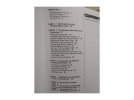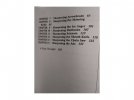Thanks, 000Robert. It looks pretty basic and dated, from what I can tell. Maybe I shouldn't judge a book by its cover.
Previous reviewers have said he recommends a blade width of 0.2 inches at one-quarter inch back form the apex. That geometry works out to a 4.6 dps edge, which is extremely acute. A microbevel would knock raise that angle, but it's still pretty acute.
I've recently switched my Rukus edge from 15 dps to 20 dps, so it could handle some chopping. The edge holds up a lot better know, with not much loss of slicing ability.
If I remember correctly, Larrin found that edge angle is a greater factor in slicing ability than edge width. When I came to the forum many years ago, the gray beards were saying that edge width (behind the edge width) is more important than edge angle, given equal edge sharpness. I've found that a edge width 0.015 inch is pretty ideal for me, but 15 dps and lower starts to see accelerated damage from chipping and/or rolling. An edge width of fifteenth thousands and a 20 dps works really well for hard-use knives. Light-use knives could go lower.
I did order the book from Amazon, but my sense is that any sharpening book in today's world has to include high-wear powder steels and diamond sharpening systems. And guided systems are going to be a lot better for anyone wanting the ability to sharpen knives quickly and easily, without investing years in building up muscle and brain memory.








